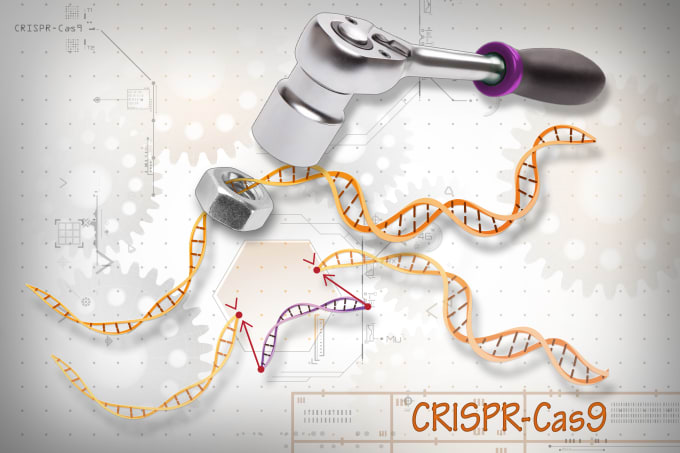Piecing together the puzzle of autism risk genes with a scalable genetic screening approach

102. That’s how many risk genes have been associated with autism spectrum disorder, according to one study (ASD; 1). This number may not seem very large but consider that there are some disorders with only a single gene involved, like cystic fibrosis and sickle cell anemia (2).
Because most neurological diseases and disorders, like ASD, are the result of dysfunction in more than one gene, investigating how these genes contribute to disease mechanisms can be complicated—not unlike piecing together a jigsaw puzzle. Things get even more complicated when investigations focus on specific mutations since there are thousands of potential mutations that may work independently or in combination to impart their effects.
With so many potential mutations to evaluate, it could take many years to investigate their contributions to ASD—that is, if researchers can only investigate one or even a handful at a time. However, Jin et al. developed an in vivo Perturb-Seq screening method that enables single cell resolution for functional screening of large numbers of CRISPR perturbations (3).
Studying many genes at once with the power of single cell sequencing
Single cell RNA sequencing (scRNA-seq) is a crucial aspect of this Perturb-Seq method, giving the researchers the resolution to identify the presence of a CRISPR perturbation in a cell using unique barcodes assigned to each mutation. Furthermore, each cell’s transcriptomic profile could also be determined and compared to controls to see how the presence of a perturbation impacted its gene signature.
Another benefit of scRNA-seq for this method was its ability to process large numbers of cells. The researchers were able to examine over 30,000 cells, then limit their analysis to just those cells that contained a single perturbation to understand the contributions of each mutation.
Putting Perturb-Seq to the test
The authors started by examining public data to identify candidate genes shared by humans and mice. Loss-of-function mutations were introduced into a total of 35 risk genes associated with ASD and neurodevelopmental delay (ND), and were targeted within the mouse forebrain in utero with a pooled CRISPR-Cas9 genome editing approach. scRNA-seq, performed with Chromium Single Cell 3′, was then used to examine the consequences of these mutations in 7-day-old postnatal brains (referred to as P7 mice).

Jin et al. examined the impact of 35 ASD- and ND-associated risk genes on cortical projection neurons, cortical inhibitory neurons, astrocytes, oligodendrocytes, and microglia/macrophages. First, they checked to determine whether or not the mutations influenced the proportions at which the different cell types were present. Only Dyrk1A loss-of-function resulted in a significant change in cell-type composition, which, in this case, was associated with higher oligodendrocyte levels and lower microglia/macrophage levels.
Next, the investigation turned to the individual perturbations and how they influenced molecular changes in gene modules representing either common biological or cell type–specific processes. Perturbations of Adnp, Ank2, Ash1l, Chd8, Gatad2b, Pogz, Scn2a1, Stard9, and Upf3b were observed to significantly affect one or more of the cell type–specific modules.
Of these mutations, the authors focused on the effects of Ank2, Chd8, and Gatad2b. Perturbation of Ank2 was found to up-regulate the cell-specific interneuron module characterized by the expression of Ndfn. This may suggest that Ank2 plays a role in cortical development. Chd8 and Gatad2b perturbations were observed to decrease the expression of the cell-specific oligodendrocyte module characterized by precursor and cycling cells, suggesting a role for these genes in oligodendrocyte maturation.
Just the beginning for Perturb-Seq
The in vivo Perturb-Seq protocol developed by Jin et al. represents a promising new screening tool for studies of complex disorders and diseases. Even more exciting is that this study only scratches the surface of what is possible with this method. As the authors note,
“With advances in other single-cell profiling approaches [such as single-cell assay for transposase-accessible chromatin with high-throughput sequencing (ATAC-seq), single-cell multi-omics, and spatial genomics], we expect in vivo Perturb-Seq to be coupled in the near future with diverse readouts to better define the function of disease risk–associated variants, from molecular mechanisms to non–cell autonomous effects in tissues.”
If you’d like to learn more about Perturb-Seq, we invite you to register for our Global Psychiatric Disorders Virtual Symposium, where Dr. Jin Xin, lead author of this study, will discuss Perturb-Seq and its application to complex neurological disorders. Register now →
References
- Satterstrom FK, et al. Large-scale exome sequencing study implicates both developmental and functional changes in the neurobiology of autism. Cell 180(3): 568–584.e23, 2020.
- Chial H. Rare genetic disorders: Learning about genetic disease through gene mapping, SNPs, and microarray data. Nature Education 1(1): 192, 2008.
- Jin X, et al. In vivo Perturb-Seq reveals neuronal and glial abnormalities associated with autism risk genes. Science 370(6520): eaaz6063, 2020.
